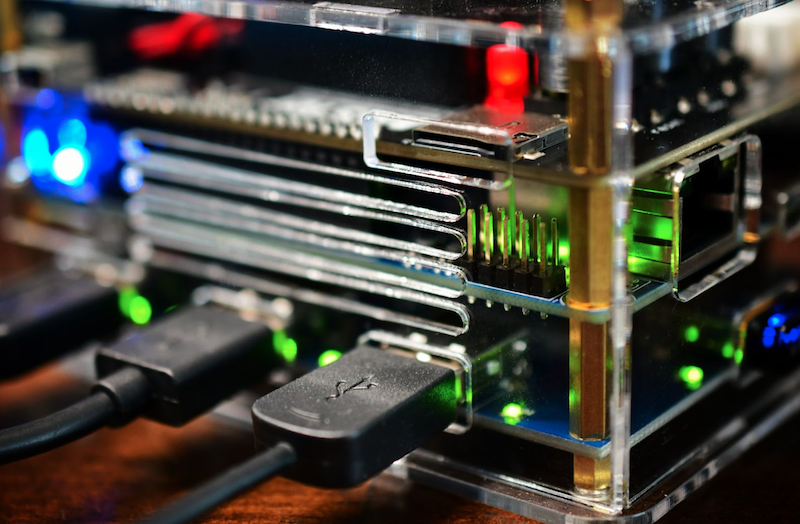Understanding the Basics of IT Infrastructure for Small Businesses

Welcome to the world of IT infrastructure! At TurningPoint Systems, we understand that small businesses often face challenges when it comes to setting up and maintaining their IT infrastructure due to limited funds and technical expertise. But don’t worry, we’ve got you covered.
Hardware Components of IT Infrastructure
Let’s start with the hardware components. Hardware refers to the physical devices that make up your IT infrastructure:
- Servers: These powerful machines provide hosting services and computational capacity for running applications, storing data, and managing network resources.
- Storage devices: These devices, such as hard disk drives (HDD) and network-attached storage (NAS), are used to store and manage data.
- Networking devices: These devices, including routers, switches, and modems, connect computers and devices on a network, ensuring the integrity of data transmission.
- Client devices: These are the devices employees use to connect to the IT infrastructure, such as smartphones, laptops, or desktop computers.
Setting up and maintaining these hardware components can be complex, which is why you can rely on TurningPoint Systems’ team of experts to handle it for you.
Software Components of IT Infrastructure
Now let’s explore the software components of your IT infrastructure:
- Operating system (OS): The OS is the software that controls how other applications use your computer’s hardware and software resources. It serves as the backbone of your IT system. Common operating systems include Windows, macOS, and Linux.
- Application software: These are programs and applications designed for specific tasks, such as enterprise resource planning (ERP), project management, customer relationship management (CRM), and Microsoft Office. TurningPoint Systems can install and customize these applications to meet your unique business requirements.
- Security software: Protecting your IT infrastructure from malicious attacks is crucial. Security software, including virus scanners, firewalls, and intrusion detection systems, helps safeguard your data and IT resources.
The Advantages of Cloud Computing for Small Businesses
Cloud computing offers numerous benefits for small businesses:
- Cost-effectiveness: Instead of investing in costly hardware and software upfront, you can pay for cloud computing services on a subscription or as-needed basis, saving you money.
- Scalability and flexibility: With cloud computing, you can easily adjust your IT resources to meet changing demands, ensuring your infrastructure grows alongside your business.
- Accessibility and collaboration: As long as you have an internet connection, you can access your data and applications from anywhere, enabling seamless collaboration among employees and increasing productivity.
Different Cloud Computing Deployment Models
There are three main deployment models for cloud computing:
- Public cloud: Multiple organizations share the infrastructure provided by a third-party provider. This model offers cost-effective pay-as-you-go pricing.
- Private cloud: Your company’s own IT department handles the distribution of cloud services, and the infrastructure is for internal use only. It can be hosted on-premises or by a third party.
- Hybrid cloud: This model allows you to use both public and private cloud services, combining the benefits of both. You can enjoy the security of private cloud services and the scalability of public cloud services.
If you ever have any questions about the different types of cloud computing and how they could work for you, TurningPoint Systems can help talk you through the process.
Ensuring Network Security
Network security is crucial for small businesses, and TurningPoint Systems can help protect your IT infrastructure from threats:
- Malware: Programs designed to harm or steal information from computer systems. They can spread through email attachments, downloadable programs, or compromised websites.
- Phishing attacks: Fraudulent communication that tricks victims into divulging private information. Attackers use emails, texts, and social media to carry out these attacks.
- Ransomware: Malicious software that encrypts data and demands payment to unlock it. It spreads through compromised websites, software downloads, and email attachments.
Securing Your IT Infrastructure
To secure your IT infrastructure, follow these top tips:
- Enable firewalls to prevent unauthorized access to your network and protect your data.
- Install and regularly update antivirus software to detect and eliminate malicious software.
- Regularly back up your data and store backups in a secure location to protect against data loss.
Conclusion
Your IT infrastructure is the backbone of your business, regardless of your industry. It’s essential to have well-designed hardware and software components, leverage cloud computing benefits, ensure network security, and manage your infrastructure effectively.
To succeed in today’s competitive market, you must adapt to evolving technological solutions. Contact TurningPoint Systems today to improve your IT infrastructure and take your business to the next level. We’re here to support beginners like you on your IT journey.
Share at